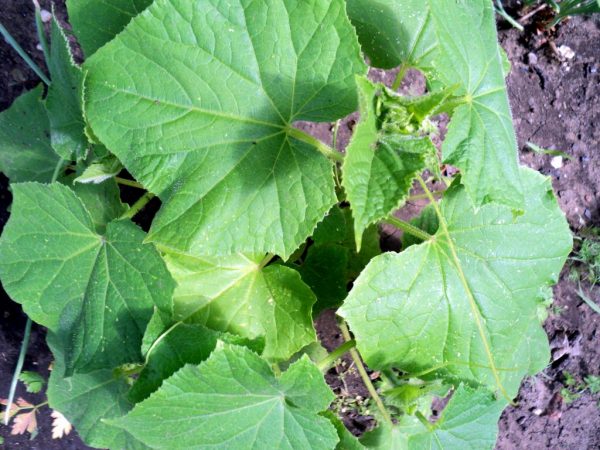Characteristics of Monastyrsky cucumbers
Cucumbers are rightfully one of the most popular vegetable crops. The fruits of these plants can be eaten raw or preserved for the winter. The Monastyrskiy cucumber variety attracts agronomists with its taste and long keeping quality.

Characteristics of Monastyrsky cucumbers
The variety is resistant to common diseases. The strength of the fruits allows them to be transported over long distances.
Characteristics of the variety
Monastic cucumber is grown all over the world for its balanced qualities. The features of the variety are:
- fruiting times - 45-50 days;
- the number of zelents is 2.3 - 3 kg per 1 m².
The bush is pollinated, the type of cultivation can be either open or closed. For the comfortable growth of lashes, it is recommended to install trellises. This will make it easier to care for the bush.
Seeds should be germinated before planting. The seedling method will speed up the vegetation of the plants. Monastic cucumbers are grown in a temperate climatic zone. The variety does not tolerate a lack of care and can give a small crop at a summer cottage.
Description of the bush
The weave is medium-branched, with accelerated growth. Mixed flowering. One knot forms from 2 to 4 zelents, which prevents the fruits from overgrowing.
The leaves are dark green, medium in size. The plant is indeterminate, with a single central stem.
Description of fruits
Zelentsy for sale must have a number of characteristics. These include:
- cucumber weight - 90-100 g;
- length - 10 cm;
- cross section - 3 cm.
The pulp of the fruit is crispy and without bitterness. Zelentsi do not lose their taste after salting. The surface is covered with medium-sized tubercles, with small black spines present. Cucumbers are cylindrical.
Care
For a bountiful harvest, cucumbers should create favorable conditions. The culture needs irrigation, weeding and feeding.
Watering

Cucumbers need abundant watering
Cucumbers need more water as their fruits are 95% liquid. The irrigation regime depends on the growing season. Before the formation of ovaries, 4 liters of water should be added under the bush. During fruiting, the rate is increased to 6 liters.
Hilling
Scourges of this type feel discomfort if the topsoil hardens. After watering or precipitation, the bushes need to be spud. However, the procedure for loosening or weeding must be carried out carefully, since the roots of the plant are close to the surface.
Fertilizer
The lack of minerals can lead to impaired growth and deformation of the fruit. Once during the growing season, the bushes should be fed with a mineral mixture that contains nitrogen, potassium and magnesium. You can also periodically add to the soil with watering:
- onion infusion - two handfuls of husks per 5 liters of water, leave for three days;
- fermented milk products - 1 liter of syrovotka per 5 liters of warm water;
- diluted chicken droppings - 200 grams of droppings per 10 liters of water.
It should be remembered that fertilizer of animal origin attracts harmful insects.If the site is infected with a whitefly or spider mite, such feeding should be excluded.
Formation
Grade scourges need shaping. Pruning can be done twice during the growing season, before fruiting. It is recommended to cut the lower side shoots. The central stem must remain intact - it is he who forms the greens.
Diseases and pests
The Monastyrsky cucumber is not a hybrid, but the culture has good resistance to common diseases. Disease prevention should be carried out once during the entire growing season.
The mid-maturity of the species allows the use of heavy agrochemicals. But in most cases, you can get by with solutions prepared from natural ingredients:
- The causes of powdery mildew are excess nitrogen fertilizers and plant hypothermia. A mixture of iodine, milk and soap will help prevent it. With a similar solution, you need to process the leaves of the bushes.
- Peronosporosis is a fungal disease caused by excess moisture. Prevention of this disease includes the treatment of lashes with fermented milk products.
- White rot is also caused by soil moisture. To reduce the risk of infection, you should water the bushes with water with urea diluted in it in proportions of 10 g per 10 liters.
Pest insects are often a major threat to plants. Some of them attack the bushes during growth, others are attracted by the harvest. The most dangerous pests are aphids and slugs.
Prophylaxis
Pest prevention begins in the fall, during soil preparation. The soil should be dug up and left in this form until frost. The cold will destroy the larvae and weed seeds.
Seeds can be dried immediately before germination. It will also strengthen the immunity of cucumbers and improve fruiting.
Conclusion
Monastyrsky cucumber is grown both for sale and for private consumption. Moderate requirements and good taste are the main positive characteristics of the variety.
The description of the species also includes resistance to many diseases. Zelentsy tolerate long-term transportation well.


